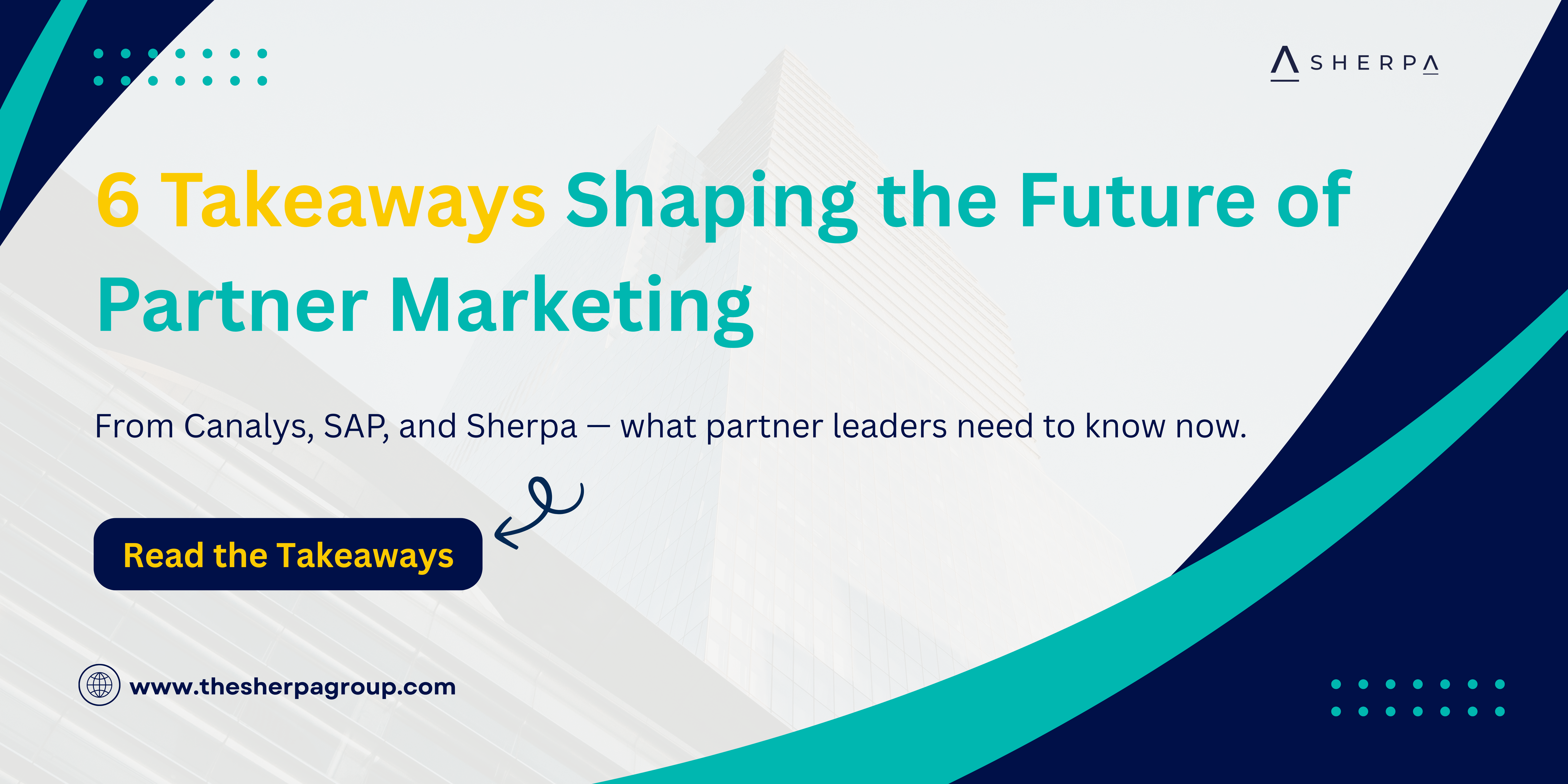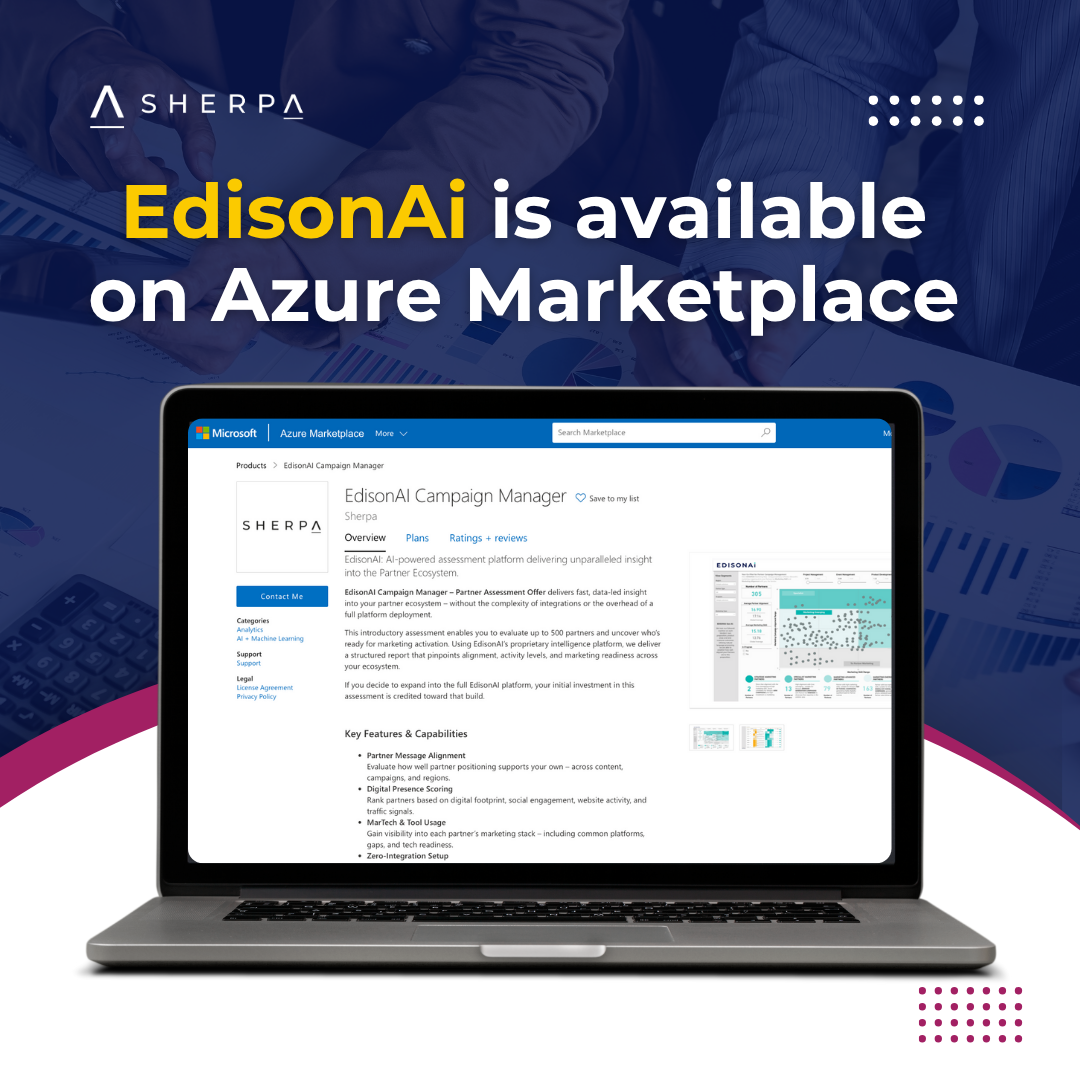The Future of Partner Marketing: 6 Takeaways from the webinar Webinar
Partner marketing is entering a new era.
-1.png)
It was once again a pleasure to host the State of Channel 2023 Panel Discussion and thank you to all who joined the session live. Hosted by Jay McBain, Chief Analyst, Canalyst, the panel reflected on 2022, discussed if it was time to re-quantify Partner Value, Partner Recruitment and defined the Key Channel trends to keep an eye on in 2023.
The State of Channel 2023 panel was made up of industry leaders;
Jay McBain, Canalyst
Nick Otto, IBM:
Kelly Sarabyn, Hubspot:
Tom Perry, The Sherpa Group
For those who couldn't make the live discussion, you can watch the full recording here. We've also summarized the key discussion points if you didn’t have the time to dedicate to the recording (although it’s well worth the hour).
Jay started the session with some reflections from the panellists about 2022:
2022, was a year punctuated with supply chain issues, inflation, a war in Europe and tech layoffs globally. Yet, despite the turmoil, there have been bright spots of growth and opportunity.
What does this turmoil mean for the future and the longer term; changing programs, process adaptations, technology and people movements?
Kelly comments that there has been a higher degree of uncertainty, which, combined with changing trends, is making people move to defensive and more conservative positions. They're asking themselves "how can we do more for less?". This has great relevance in the Partner world. For some, this might focus organizations on more transactional Partners, whilst reducing the focus on Partners that require a longer-term strategy.
Nick comments on the strong year for IBM - 2022 was an opportunity to listen to Partners and customers and understand what the uncertainty has meant to their business drivers. The result has been growth in ecosystems – and a unification of the IBM ecosystems under a single umbrella.
Tom reflects that there has been a lot of activity around the assessment of partnerships and ecosystems, and questions about how to develop an ecosystem and Partner program. This hasn’t just been from enterprise organizations but also from mid-market and scale-up technology companies. Organizations are using more data to assist in identifying gaps and opportunities in Partner engagement, and the program adaptations required to drive joint opportunity.
Microsoft’s new Point system is allowing Vendors to measure and reward Partners at different points of value instead of at the point of sale. In fact, two thirds of the points are awarded not at the point of sale.
What are the other programmatic changes we are seeing in terms of how partners ought to be measured?
Nick talks about the unification of the ecosystem into one program – one that can fit all different types of Partners into the program. There are variables which aren’t just about the lifecycle of the customer, but also variables related to the Partners themselves and their activities within the program - such as education and training.
Kelly comments that HubSpot is thinking end-to-end about the customer experience and thinking clearly about what the Partners are doing for Hubspot – and what Hubspot is doing for its Partners.
Tom points out that we are seeing more dedicated vendor teams related to Partners at different stages – not just the focus on the point of sale.
“Points-based system also allows Vendors to be more reactive to the market, giving more flexibility to be able to deliver on Partner growth.” Tom Perry, CEO, The Sherpa Group.
Moving on to Partner recruitment, Jay comments that there isn’t a narrow set of Partners anymore. There is an enormous wealth of potential Partners for any technology. So Partner recruitment starts to become the ability to collaborate and communicate within this potential Partner world so that when the opportunity arises, partnerships can be quickly established.
Nick speaks about the investment in making it easy to become a Partner – with programs that help maximize the value for a Partner. Alongside this, being highly focused on the product strategy allows you to have the right market and product narrative in front of the right prospective Partners.
Kelly mentions that the brand of your ecosystem is important to consider. Prospects will already have a perception of your brand and program. So building the brand and the brand of your ecosystem is important.
Hear more of Jay and the panel’s view and fantastic insights around:
Nick’s focus is going to be continuing to look at the end customer and being easy and available for them to get the technology they want, in the way that they choose.
Kelly feels that any short-term conservatism around partnership and routes to market are going to be washed out by the macro trends being driven by more digital native business buyers.
Tom concludes that there will be no slowing down of alliances. Partnerships are much higher up on the agenda and with that, will come investment into partnerships and better personalization.

Partner marketing is entering a new era.

Partner marketing isn’t just evolving, it’s accelerating. With buying committees now stretching to 20+ decision-makers, AI reshaping how we work, and...

.png)
We were joined by two Partnerships and ecosystem professionals for our latest webinar, ‘Plan your Partner landscape to help recession proof your...
-2.png)
Sherpa's CEO Tom Perry joined Impartners Masterclass with Dave Taylor and Trevor Burnett discussing 'how to scale demand marketing with your...

Following the success and feedback of our Clock Tower dinner in April, the Sherpa team hosted guests for our second roundtable dinner. Our guests...